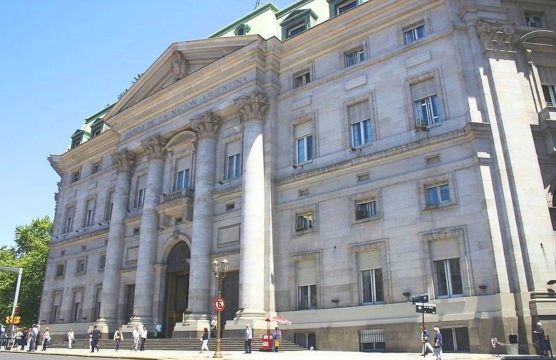
Will Default Dampen China-Argentina Ties?
The Fernández administration’s refusal to comply with a US court order to pay holdout hedge funds has once again landed Argentina in default.
Not as anticipated as his visit to Cuba, but at least equally important for the future of US-Latin America relations, was President Obama’s trip to Argentina. The main goal of this visit was to boost President Mauricio Macri in his attempts to normalize Argentina’s economy and open the country to global trade and finance. Based on the current political trends in the hemisphere, and although no major bilateral initiatives are expected, Macri’s Argentina will likely become one of the closest partners of the US in the region.
The visit comes only months after Macri succeeded Cristina Fernández de Kirchner, who maintained what Obama himself called an “anti-US” foreign policy throughout her term, usually siding with Venezuela on regional matters. Bilateral relations were strained by her government’s attempt to negotiate with Iran over the investigation of a 1994 terrorist attack in Buenos Aires, and when her foreign minister personally confiscated the cargo of a US military cargo plane. In 2005—during the last visit of a US president to Argentina—Fernández’s husband and predecessor, Néstor Kirchner, confronted George W. Bush and harshly rejected his proposed Free Trade Area of the Americas.
The contrast with the current visit was enormous. Obama praised Macri for the decisive steps he has taken in only 100 days in office to resolve the numerous macroeconomic distortions he inherited. These measures include lifting currency controls, reducing import restrictions, and—most importantly—reaching an agreement with most of the holdouts (or vulture funds, as they are known in Argentina) to end Argentina’s longstanding default. The Argentine Chamber of Deputies already approved the agreement with a significant majority, and it will likely pass the Senate in late March. Obama compared Macri’s efforts to reenter the financial system with his own success in overcoming the “Great Recession,” and said that under Macri Argentina “is reassuming its traditional leadership role in the region and around the world.”
No one expected grand announcements during the President’s visit to Argentina. Rather, this trip was mainly about resuming cordial and friendly relations with the third-largest economy in the region, and a Latin American member of the G20 together with Brazil and Mexico. The main areas of agreement were:
In addition, at the request of the Macri government, the Obama administration announced that it would declassify military and intelligence documents about US relations with the last Argentine military dictatorship. Both presidents also visited a memorial for the victims of the dictatorship in Buenos Aires. These moves were largely seen as a response to some political and human right groups in Argentina that criticized Obama for visiting precisely on the day of the 40th anniversary of the 1976 coup that installed the bloody dictatorship.
It remains to be seen if Macri’s reforms will succeed in rekindling economic growth in Argentina. Inflation remains extremely high, labor unions are expressing their opposition to some of Macri’s measures, and the president does not hold a majority in Congress. For now, moderate sectors within Peronism—especially provincial governors—are collaborating with the president. That might change if the economy deteriorates further, and if Macri’s currently high poll numbers were to fall.
Nevertheless, Buenos Aires has become one of Washington’s closest allies in its desire to improve relations with Latin America and see a new generation of leaders in the region, and will likely remain so for the foreseeable future. To consolidate this trend, Washington will likely work to include Argentina in regional discussions and boost economic opportunities, including lifting restrictions for Argentine goods. The main political challenge for Macri will be to show that this does not mean the return to neoliberal policies and the “automatic alignment” with Washington the country pursued in the 1990s, and which most Argentines still associate with the economic collapse of 2001.
The Fernández administration’s refusal to comply with a US court order to pay holdout hedge funds has once again landed Argentina in default.
Column on the results of the 2007 PISA exam.
Article discusses Argentina’s ban on publishing the results of student achievement tests and its implications for education quality.
